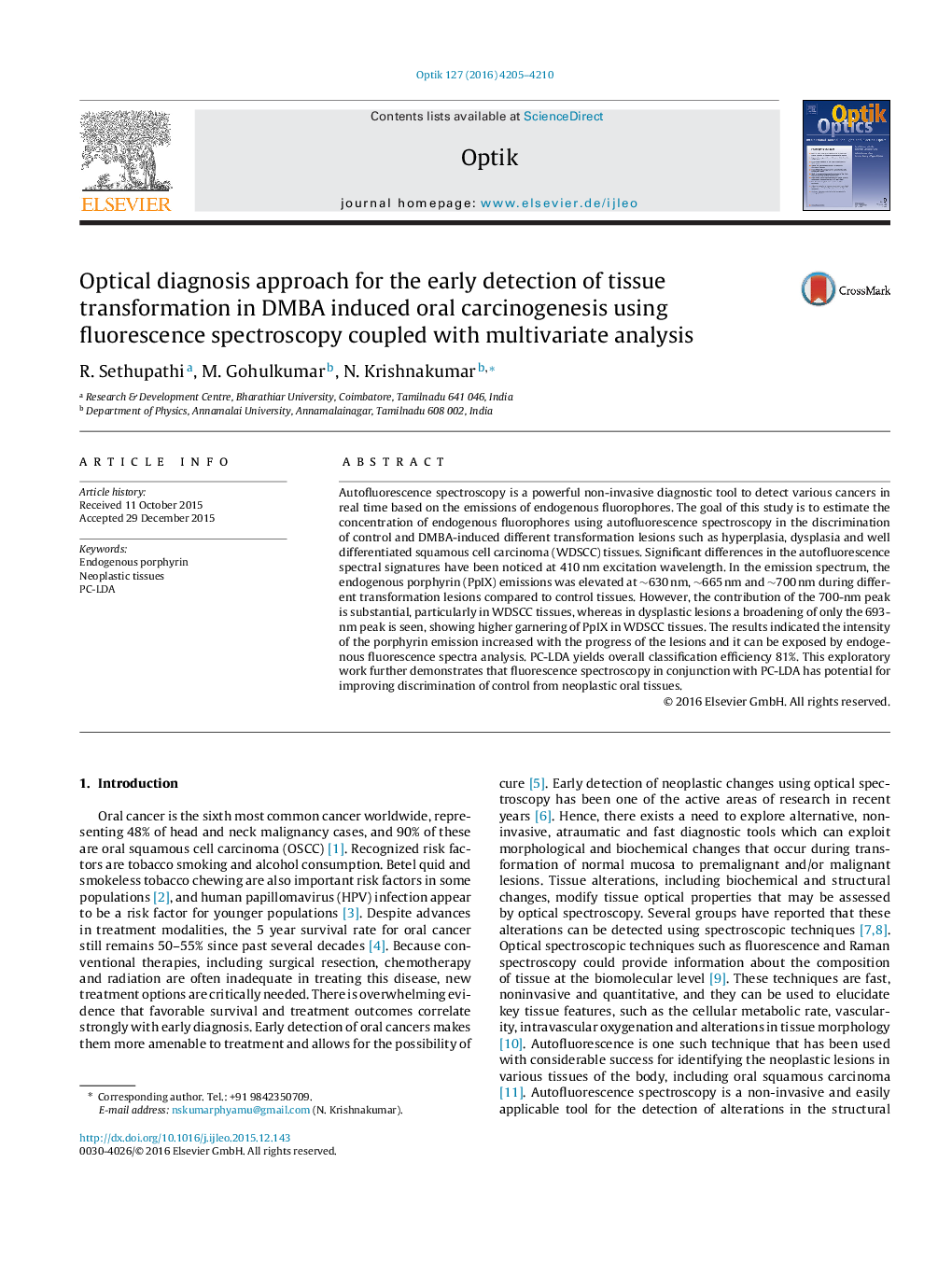| کد مقاله | کد نشریه | سال انتشار | مقاله انگلیسی | نسخه تمام متن |
|---|---|---|---|---|
| 846930 | 909215 | 2016 | 6 صفحه PDF | دانلود رایگان |

Autofluorescence spectroscopy is a powerful non-invasive diagnostic tool to detect various cancers in real time based on the emissions of endogenous fluorophores. The goal of this study is to estimate the concentration of endogenous fluorophores using autofluorescence spectroscopy in the discrimination of control and DMBA-induced different transformation lesions such as hyperplasia, dysplasia and well differentiated squamous cell carcinoma (WDSCC) tissues. Significant differences in the autofluorescence spectral signatures have been noticed at 410 nm excitation wavelength. In the emission spectrum, the endogenous porphyrin (PpIX) emissions was elevated at ∼630 nm, ∼665 nm and ∼700 nm during different transformation lesions compared to control tissues. However, the contribution of the 700-nm peak is substantial, particularly in WDSCC tissues, whereas in dysplastic lesions a broadening of only the 693-nm peak is seen, showing higher garnering of PpIX in WDSCC tissues. The results indicated the intensity of the porphyrin emission increased with the progress of the lesions and it can be exposed by endogenous fluorescence spectra analysis. PC-LDA yields overall classification efficiency 81%. This exploratory work further demonstrates that fluorescence spectroscopy in conjunction with PC-LDA has potential for improving discrimination of control from neoplastic oral tissues.
Journal: Optik - International Journal for Light and Electron Optics - Volume 127, Issue 10, May 2016, Pages 4205–4210